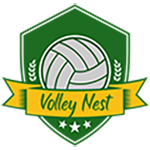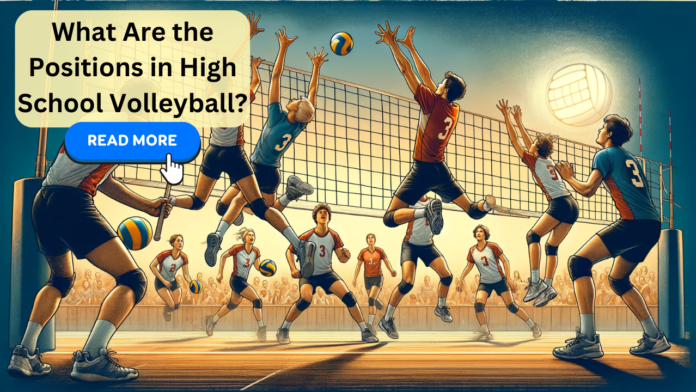Understanding “What Are the Positions in High School Volleyball?” is essential for anyone involved in or passionate about the sport, as it’s not merely a game but a vibrant, dynamic contest of skill, strategy, and spirit on the volleyball court. Each player, armed with their unique skill set, plays a pivotal role in the team’s success. But what are these positions, and what responsibilities do they carry? Join us as we delve into the core of high school volleyball, unpacking the roles each position plays and their critical importance to the game’s outcome.
The Essential Framework of a Volleyball Team
A volleyball team on the court is like a well-oiled machine, with each part playing a crucial role in the team’s overall performance. Generally, there are six key positions in volleyball, each with distinct responsibilities:
- Setter
- Outside Hitter (also known as Left Side Hitter)
- Middle Blocker
- Opposite Hitter
- Libero
- Defensive Specialist
The Setter: The Strategist Who Runs the Offense
In the realm of high school volleyball, the setter stands out as the tactical mastermind, the one who runs the offense with precision and agility. This position is pivotal in “What Are the Positions in High School Volleyball?”, serving as the linchpin around which the game’s momentum swings. The setter’s role is multifaceted, requiring not just physical skill but also mental toughness and a deep understanding of the game’s dynamics.
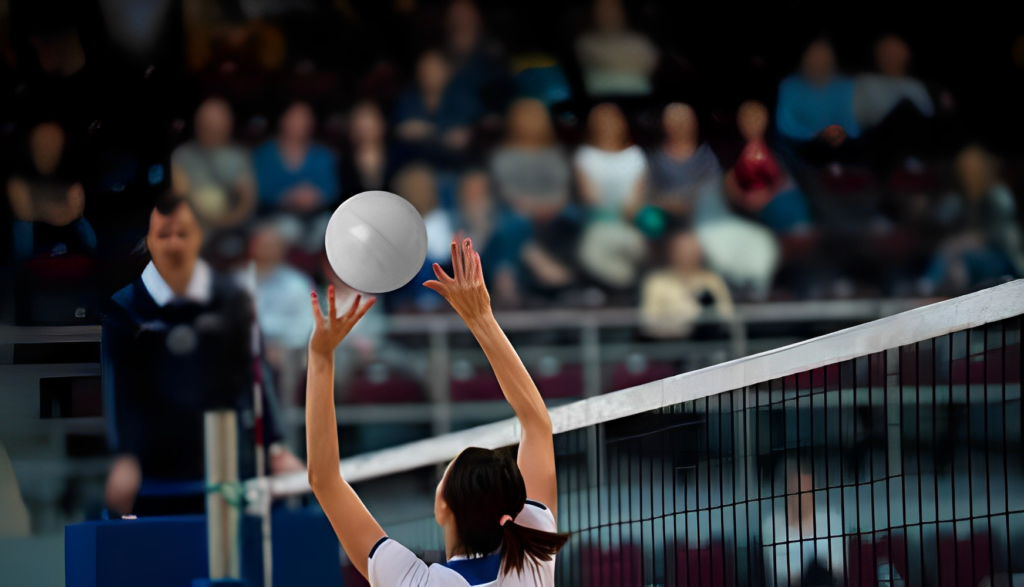
Key Responsibilities:
- Deliver the Ball: The primary duty of the setter is to deliver the ball to the hitters, setting up plays that will outmaneuver the opposing team’s defense. This requires a keen eye, quick reflexes, and the ability to make split-second decisions.
- Quick Sets: Mastering quick sets is crucial for a setter. These plays are designed to catch the opposing team off guard, allowing the hitters to hit the ball before the defense can properly set up. Quick sets demand precise timing and coordination with teammates.
- Mental Toughness: A setter must possess mental toughness, staying calm and focused under pressure. They are often the team’s on-court leader, responsible for making strategic decisions and motivating their teammates.
- Volleyball Teams’ Success: The success of volleyball teams often hinges on the setter’s ability to control the game and set the ball with accuracy. Their strategic choices in delivering the ball can make the difference between a point won and a point lost.
Engaging the Team:
- Set the Ball Strategically: The setter needs to read the game and set the ball to the hitters with the best chance of scoring. This involves understanding each teammate’s strengths and the weaknesses of the opposing team’s defense.
- Communication: Effective communication with teammates is essential. The setter must call plays and adjust strategies on the fly, ensuring everyone is on the same page.
The Heart of the Team:
The setter, in essence, is the heart of the volleyball team, pumping energy, strategy, and direction into every play. Their ability to deliver the ball effectively, execute quick sets, and maintain mental toughness under pressure is critical to the team’s overall performance. As we dive deeper into “What Are the Positions in High School Volleyball?”, it’s clear that the setter’s role is not just about hitting the ball over the net; it’s about setting the stage for victory, one play at a time.
Outside Hitter: The Versatile Powerhouse
In the vibrant world of high school volleyball, the outside hitter emerges as a versatile force, adept at both offense and defense. This role is a cornerstone in understanding “What Are the Positions in High School Volleyball?”, showcasing a player’s ability to adapt and excel across the volleyball court. An outside hitter, often referred to as the left side hitter, embodies versatility, playing a crucial part in the front row and mastering the art of attacking the ball from the left side of the court.
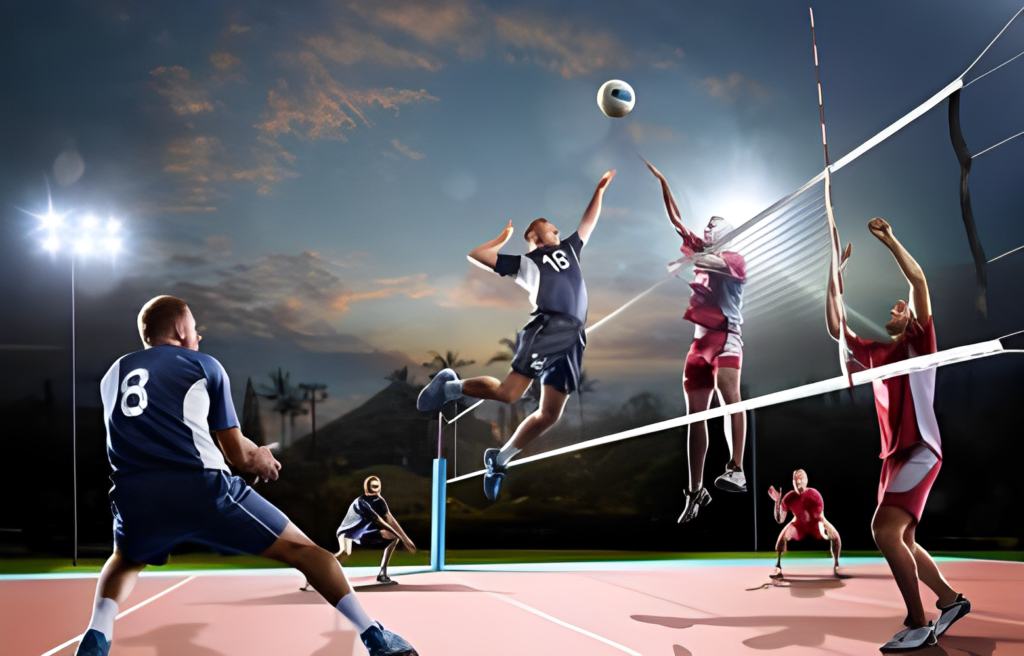
Core Responsibilities:
- Attacking the Ball: The primary role of an outside hitter is to attack the ball, aiming for the perfect spot on the court to land a point. Their position allows them to be a dominant force, hitting the ball with precision and power.
- Serve Receive and Defense: Beyond attacking, outside hitters play a vital role in serve receive and playing defense. They are often the first line of defense against the opposing team’s serves, requiring quick reflexes and strategic positioning.
- Versatility on the Court: Being a versatile player on the court means the outside hitter must transition seamlessly between offense and defense, showcasing their all-around skills.
Engaging in Team Dynamics:
- Collaboration with the Middle Blocker and Middle Hitter: The synergy between the outside hitter, middle blocker, and middle hitter is essential. Together, they form a formidable front row, blocking the opposing team’s attacks and creating opportunities for their team.
- Wearing the Colored Jersey: While typically the libero wears a different colored jersey, it symbolizes the importance of specialized roles within volleyball player positions, highlighting the unique contributions of each position to the volleyball team’s success.
The Strategic Importance of the Outside Hitter:
- Spot on the Court: Choosing the right spot on the court to hit the ball is crucial. The outside hitter must analyze the defense and find gaps to exploit, demonstrating their strategic thinking.
- Balancing Offense and Defense: Mastery of both offense and defense is what sets the outside hitter apart. They must be adept at attacking the ball aggressively while also being prepared to switch to a defensive stance, showcasing their ability to adapt to the dynamic nature of volleyball.
The Heart and Soul of the Team:
The outside hitter plays a pivotal role in the success of a volleyball team, blending athleticism with strategic acumen. Their ability to perform on both ends of the volleyball court – from powerful serves and spikes to critical blocks and passes the ball – underscores their importance in positions in volleyball. As one of the most dynamic volleyball player positions, the outside hitter embodies the spirit of versatility, making them indispensable on any high school volleyball team. This role not only demands physical prowess but also a deep understanding of the game, making it a key piece in the puzzle of “What Are the Positions in High School Volleyball?”.
Middle Blocker: The Defensive Giant
This position is the team’s central fortress, tasked with shutting down the opposing team’s attacks and turning the tide of the game from the heart of the volleyball court. Middle blockers, with their towering presence and quick reflexes, are instrumental in both defense and offense, making them indispensable members of any volleyball team.
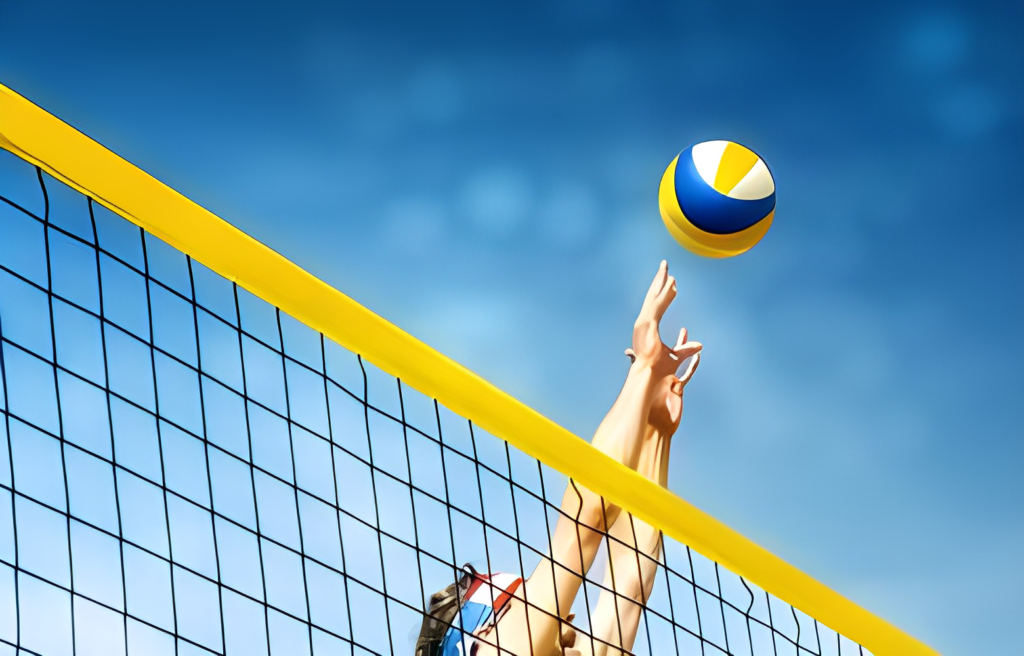
Dominating the Net:
- Blocking the Opposing Team: The primary duty of a middle blocker is to block spikes from the opposing team, using their height and agility to prevent the ball from crossing into their side of the court.
- Quick Attacks: Beyond defense, middle blockers also contribute to attacking the ball. They are crucial in executing quick middle hits, catching the opposing team’s defense off guard.
Key Skills and Strategies:
- Anticipation and Timing: Successful middle blockers excel in anticipation, reading the setter’s movements and predicting where the ball will be sent. This allows them to position themselves effectively for a block or quick attack.
- Coordination with Middle Hitter: The synergy between the middle blocker and the middle hitter is vital. Together, they can create a dynamic offense, with the middle blocker setting up quick sets for the middle hitter to exploit.
The Impact of the Middle Blocker:
- Defensive Stalwart: As the team’s defensive anchor, the middle blocker plays a critical role in neutralizing the opposing team’s offensive efforts. Their ability to block and redirect the ball sets the tone for the team’s defensive strategy.
- Offensive Contributor: While their primary role is defensive, middle blockers also contribute to the team’s offense. By attacking the ball with quick, unexpected spikes, they add another layer of threat that the opposing team must contend with.
The Central Pillar of the Team:
The middle blocker, as a defensive giant, embodies the essence of resilience and versatility on the volleyball court. Their role in blocking the opposing team’s attacks and contributing to their own team’s offensive maneuvers highlights the multifaceted nature of positions in high school volleyball. Middle blockers and middle hitters together form a formidable front, making it challenging for the opposing team to penetrate their defenses. This balance of defense and offense underscores the strategic depth required in the game, emphasizing why the middle blocker is considered one of the most critical positions in high school volleyball. Their ability to dominate the net on both ends of the court not only disrupts the rhythm of the opposing team but also paves the way for their team’s victories, showcasing the profound impact of this position in the sport.
Opposite Hitter: The Counter-Attack Specialist
In the strategic tableau of high school volleyball, the Opposite Hitter emerges as a key figure, embodying the essence of versatility and strength. This role is a linchpin in the arsenal of “What Are the Positions in High School Volleyball?”, tasked with being the primary counter-attack force. Positioned on the right side of the volleyball court, the Opposite Hitter, also known as the right-side hitter, brings a unique blend of offensive firepower and defensive resilience, making them indispensable in both the front row and back row plays.
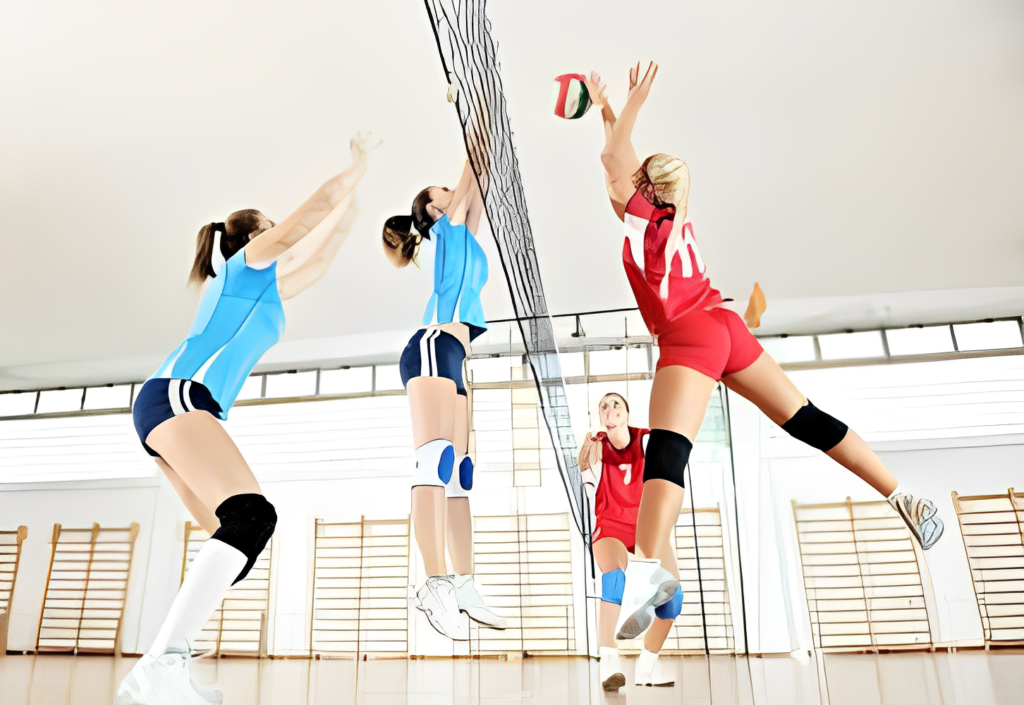
Multi-Faceted Role on the Court:
- Powerful Attacks from the Right Side: The Opposite Hitter is renowned for their ability to launch powerful attacks from the right side of the court. Their position allows them to be a critical offensive weapon, especially when the play shifts away from the left side.
- Stellar Defense and Serve Receive: Beyond their offensive capabilities, Opposite Hitters are pivotal in playing defense and managing serve receive. Their versatility enables them to be effective back-row players, contributing significantly to the team’s defensive setup.
Strategic Contributions:
- Balancing the Front Row: Opposite Hitters provide balance to the front row, complementing the left side hitters and middle blockers. Their presence ensures that the team has strong hitters across the entire front row, making it difficult for the opposing team to predict where the next attack will come from.
- Versatility in Volleyball Positions: The role of the Opposite Hitter highlights the versatility required in volleyball positions. They must be adept at hitting, blocking, and playing defense, showcasing their all-around skills on both ends of the court.
Key Skills and Coordination:
- Collaboration with Middle Hitter and Blocker: Effective coordination with the middle hitter and middle blocker is crucial. Together, they form a cohesive unit that can dynamically switch between offense and defense, ensuring that the team is always at a competitive advantage.
- Defensive Specialist Partnership: In defense, the Opposite Hitter often works closely with the team’s defensive specialist, ensuring that the back row is fortified against the opposing team’s attacks. This collaboration is key to a strong defensive strategy.
The Quintessential Team Player:
The Opposite Hitter, as the counter-attack specialist, stands out as a quintessential team player in high school volleyball. Their ability to perform across the volleyball court, excelling in both attacking and defensive maneuvers, positions them as a critical asset to any volleyball team. This role’s versatility underscores the strategic depth of volleyball positions, highlighting the importance of adaptability and strength in ensuring the team’s success. Through powerful hits from the right side, robust defense, and strategic serve receive, the Opposite Hitter embodies the spirit of resilience and versatility, making them a formidable opponent and a valuable ally in the quest for victory in high school volleyball.
Libero: The Defensive Mastermind
In the intricate dance of high school volleyball, the Libero stands out as the defensive mastermind, a pivotal figure that elevates “What Are the Positions in High School Volleyball?” to new heights. Distinguished by a different colored jersey, the Libero specializes in ball control and back-row defense, serving as the backbone of the team’s defensive strategy. This position, unique in its restrictions and capabilities, brings a level of agility and resilience that is unmatched on the volleyball court.
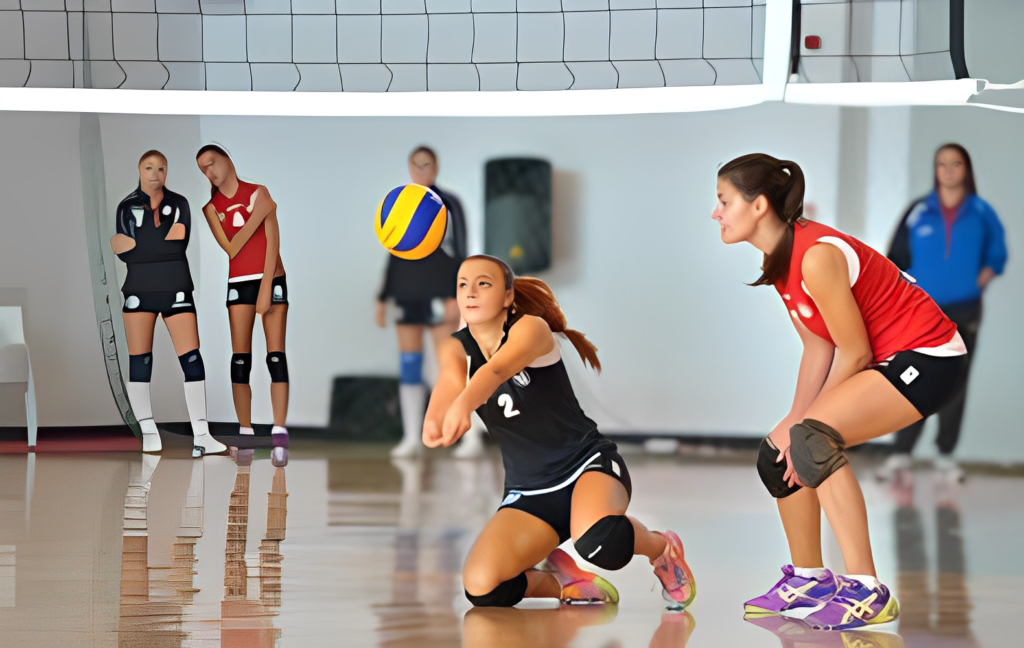
Unparalleled Defensive Skills:
- Master of Ball Control: The Libero is the ultimate defensive specialist, exhibiting unmatched ball control. Their primary role is to enhance the team’s defense, ensuring that no ball hits the floor without a valiant effort.
- Expert in Back-Row Defense: Specializing in back-row defense, the Libero is often seen making spectacular digs and passes, keeping the play alive and setting up opportunities for counterattacks.
Strategic Importance in Gameplay:
- Rotations and Replacements: The Libero can be rotated to the front row but cannot complete an attack hit from in front of the attack line or at the top of the net. This strategic flexibility allows for dynamic replacements involving the Libero, ensuring the team maintains a strong defensive lineup throughout the game.
- Vital Role in the Starting Lineup: Although the Libero may not be part of the initial attack strategy, their defensive prowess makes them an indispensable part of the starting lineup, often influencing the game’s flow and outcome.
Collaboration and Regulations:
- Collaborating with Front Row and Defensive Specialists: The Libero works closely with front row players and other defensive specialists to form a cohesive defense. Their ability to replace the Libero in certain situations adds depth to the team’s defensive strategy, making it difficult for opponents to find gaps.
- Understanding Libero-Specific Rules: In college volleyball and beyond, the Libero position is governed by specific rules that restrict their actions but also highlight their importance. They are the only player allowed unlimited substitutions and are essential for maintaining the team’s defensive integrity.
The Heart of the Team’s Defense:
The Libero, as the defensive mastermind, is more than just a player; they are a crucial strategy component, embodying resilience, agility, and unmatched ball control. Their role transcends traditional volleyball positions, offering a unique set of skills that can dramatically impact the game’s flow. From spectacular saves in the back row to strategic rotations that strengthen the team’s defense, the Libero is a testament to the importance of specialized roles in high school volleyball. As the only player with such distinct responsibilities, the Libero’s presence on the court is a constant reminder of the strategic depth and tactical nuances that make volleyball a thrilling and complex sport.
Defensive Specialist: The Flexible Defender
In the intricate dance of high school volleyball, the role of the Defensive Specialist (DS) shines as a beacon of resilience and versatility. Integral to understanding “What Are the Positions in High School Volleyball?”, the DS epitomizes the essence of great defense, showcasing a level of dedication and skill that elevates the team’s performance. This position is tailor-made for players who excel in defensive skills, embodying mental toughness and an unwavering commitment to keeping the ball in play.
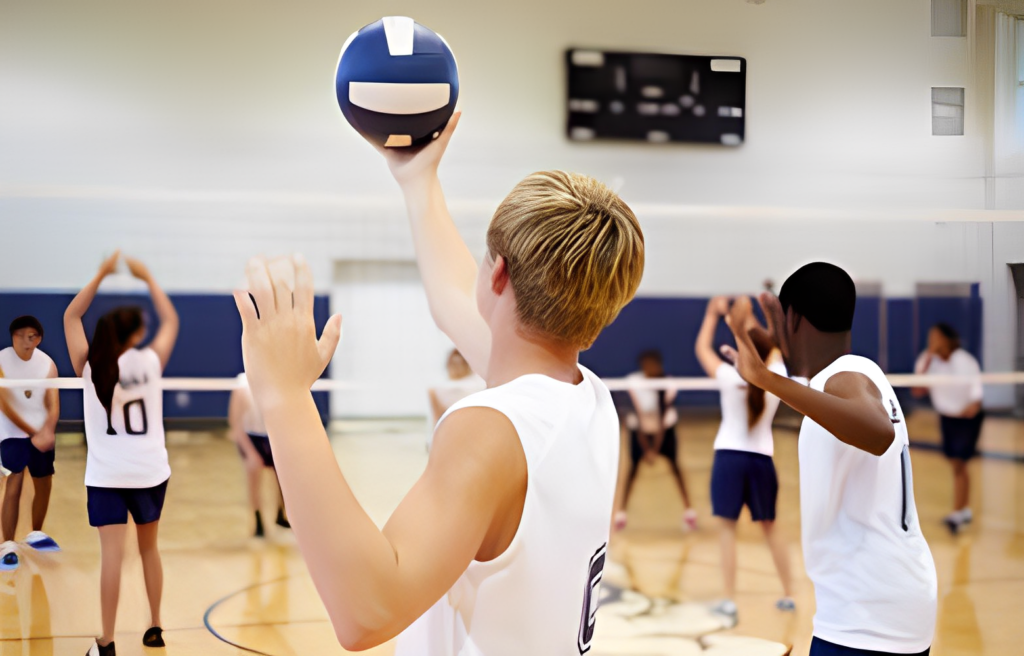
Pivotal Contributions to the Team:
- Mastery of Ball Control: At the heart of the DS position is the unparalleled ability to maintain ball control. This skill is crucial in turning the tide of the game, ensuring that the ball is not only kept in play but also well-positioned for a counterattack.
- Specialist in Volleyball Defense: The DS is the specialist in volleyball when it comes to defense. Their primary focus is on digging and receiving the driven ball, often stepping in to handle tough serves or spikes that challenge the back row.
The DS’s Role on a Team:
- Supporting the Front Row: While the DS primarily shines in the back row, their role is pivotal in supporting the front row players, especially when it comes to transitions from defense to offense. They ensure that the ball is passed accurately to the setter, setting the stage for a powerful attack.
- Flexible Replacements: The flexibility of the DS role allows for strategic replacements involving the libero or other row players, maximizing the team’s defensive capabilities without disrupting the flow of the game.
Key Skills and Attributes:
- Defensive Skills Beyond the Back Row: The DS’s defensive skills extend beyond mere back-row defense. They are adept at reading the game, positioning themselves in good positions to dig or receive the ball, and executing precise passing drills to keep the play alive.
- Mental Toughness and Positional Awareness: Mental toughness is a hallmark of the DS, equipping them to handle the pressure of relentless attacks from the opposing team. This, combined with positional awareness, makes them invaluable in scenarios where quick decisions and actions can prevent the opposing team from scoring.
The Backbone of Defense:
- Collaboration with the Middle Blocker: In plays where the ball is directed to the front row, the DS works in tandem with the middle blocker and other front row players, ensuring a seamless transition between defense and offense. This collaboration underscores the DS’s role in reinforcing the team’s defensive wall.
- Passing the Ball with Precision: A significant aspect of the DS’s responsibilities includes executing passing drills with precision, ensuring the ball is always in a favorable position for the next play. Their ability to control the ball and deliver it accurately is a testament to their skill and the critical role they play on the team.
The Unsung Hero of High School Volleyball
The Defensive Specialist in volleyball, often referred to as the DS, is the team’s flexible defender, an unsung hero whose contributions may not always capture the spotlight but are essential to the team’s success. Their expertise in keeping the ball in play, combined with their defensive prowess and mental fortitude, positions the DS as a cornerstone in any high school volleyball team’s strategy. By mastering the art of defense, DS players underscore the importance of resilience, tactical awareness, and the relentless pursuit of excellence in the game of volleyball, embodying the spirit of teamwork and dedication that is at the heart of “What Are the Positions in High School Volleyball?”.
The Cohesive Dance of Positions
Understanding the positions in high school volleyball reveals the intricate dance of players on the court, each moving with purpose and precision. From the setter, who runs the offense, to the libero, who fortifies the defense, every player’s contribution is crucial. The middle blockers and pin hitters work in tandem to block and attack, while the defensive specialists and outside hitters ensure ball control and powerful spikes. This harmonious interplay is what makes volleyball a thrilling sport to watch and play.
In conclusion, the positions in high school volleyball are more than just spots on the court; they are roles filled with responsibilities, challenges, and opportunities for excellence. Each position requires a unique skill set and mindset, from the strategic thinking of the setter to the defensive prowess of the libero. As players hone their abilities and understand their roles, they contribute to the dynamic, fast-paced game that is high school volleyball, making every match an exciting display of athleticism, strategy, and teamwork.
Conclusion
In wrapping up our exploration of “What Are the Positions in High School Volleyball?”, it becomes clear that each role on the court is not just a position but a crucial element that fuels the game’s strategy, skill, and spirit. From the strategic orchestrations of the setter to the defensive prowess of the libero, understanding these positions is key to appreciating the complexity and excitement of high school volleyball. Whether you’re a player aiming to refine your skill set or a fan looking to deepen your knowledge of the game, recognizing the unique contributions of each position enriches your connection to this dynamic sport.
FAQs
The main positions include setter, outside hitter, middle blocker, opposite hitter, libero, and defensive specialist.
A high school volleyball team typically has six players on the court during a game.
Yes, the libero is a specialized defensive position in high school volleyball.
Players rotate positions clockwise after their team wins back service from the opponent.
The setter coordinates the offense by setting the ball for attackers, aiming to create scoring opportunities.

